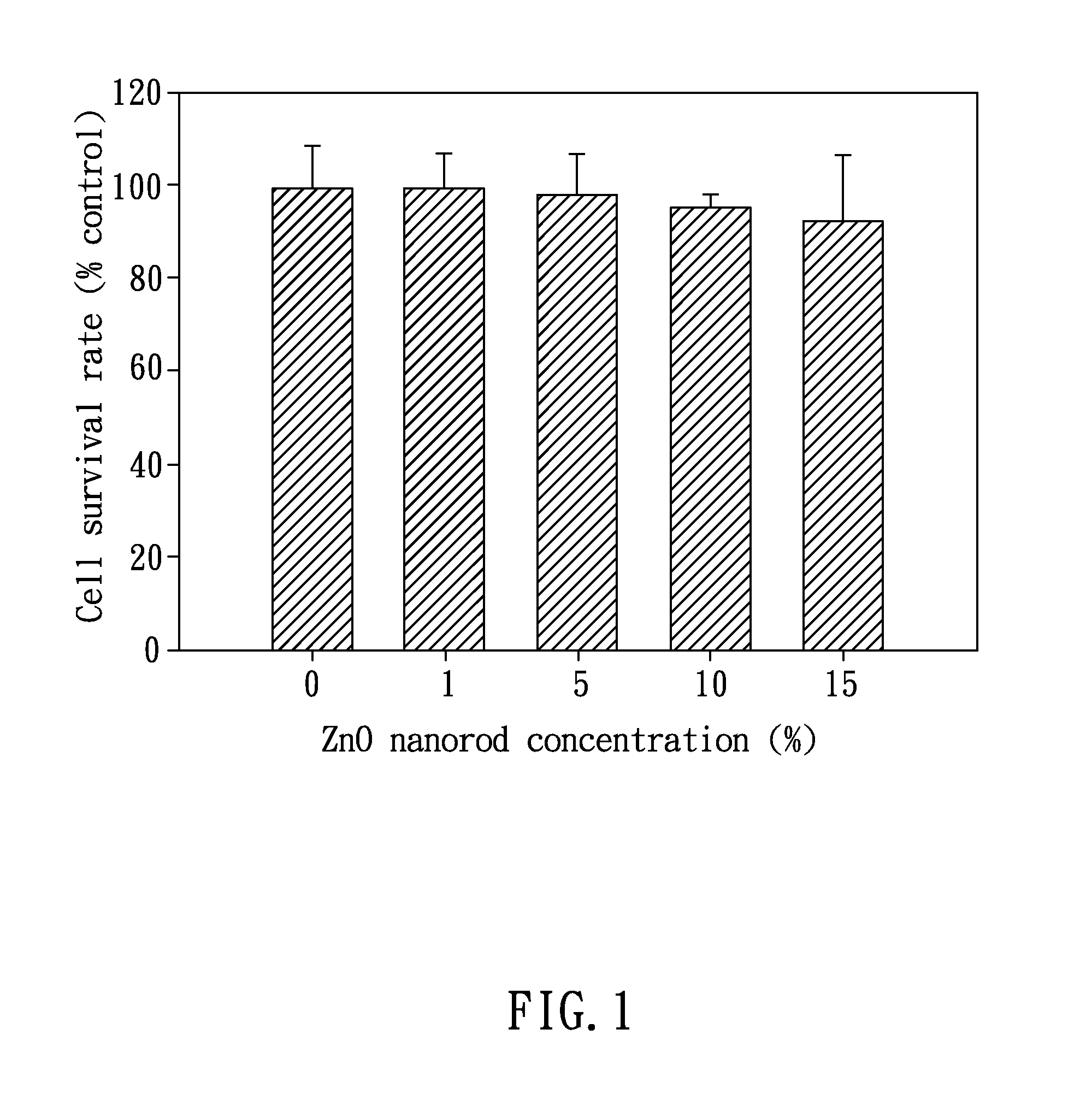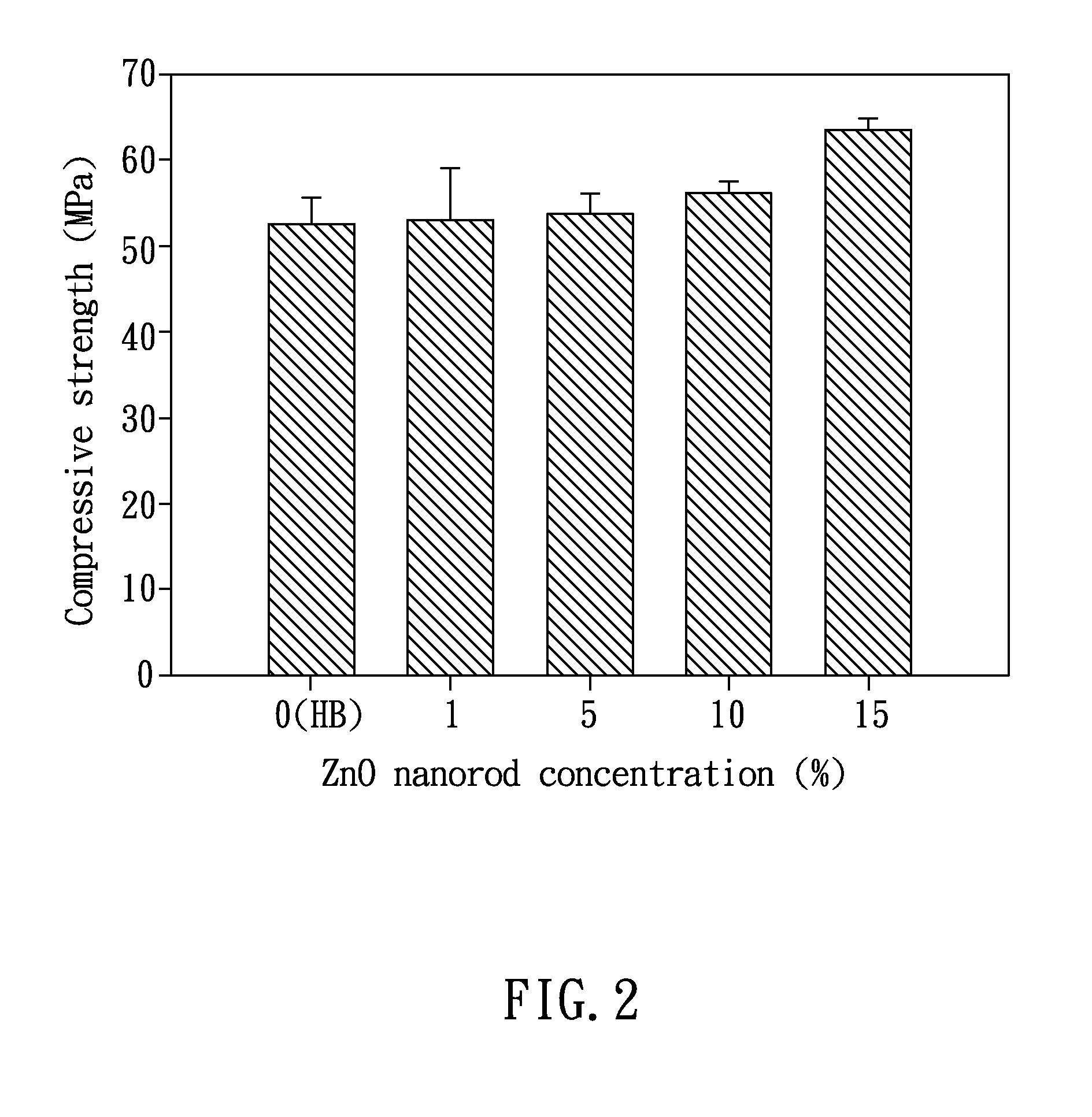Hard tissue regeneration material and method for manufacturing the same
a technology of hard tissue regeneration and regeneration material, which is applied in the field of hard tissue regeneration material, can solve the problems of poor biocompatibility to other dental materials such as resin-modified materials, increased toxicity of glass ionomers, and toxicity of glass ionomers, and achieve excellent biocompatibility and mechanical strength
- Summary
- Abstract
- Description
- Claims
- Application Information
AI Technical Summary
Benefits of technology
Problems solved by technology
Method used
Image
Examples
embodiment 1
[0041]HY-Bond polycarboxylate cement powders (Shofu, Kyoto, Japan) (curing material) were mixed with ZnO nanorods, wherein the additive amount of the ZnO nanorods was 1 wt % based on the total amount of the powders comprising the HY-Bond polycarboxylate cement powders and the ZnO nanorods. Next, a mixing liquid, which was a liquid adhesive for the HY-Bond polycarboxylate cement powders, was mixed with the powders to form a hard tissue regeneration material.
[0042]After the aforementioned process, a hard tissue regeneration material was obtained, which comprises: HY-Bond polycarboxylate cement powders and ZnO nanorods, wherein the content of the ZnO nanorods is 1 wt % based on the total amount of the HY-Bond polycarboxylate cement powders and the ZnO nanorods.
embodiment 2
[0043]The method and the steps for manufacturing the hard tissue regeneration material of the present embodiment are the same as those illustrated in Embodiment 1, except that the additive amount of the ZnO nanorods was 5 wt % based on the total amount of the powders.
embodiment 3
[0044]The method and the steps for manufacturing the hard tissue regeneration material of the present embodiment are the same as those illustrated in Embodiment 1, except that the additive amount of the ZnO nanorods was 10 wt % based on the total amount of the powders.
PUM
| Property | Measurement | Unit |
|---|---|---|
| diameters | aaaaa | aaaaa |
| temperature | aaaaa | aaaaa |
| diameters | aaaaa | aaaaa |
Abstract
Description
Claims
Application Information
 Login to View More
Login to View More - R&D
- Intellectual Property
- Life Sciences
- Materials
- Tech Scout
- Unparalleled Data Quality
- Higher Quality Content
- 60% Fewer Hallucinations
Browse by: Latest US Patents, China's latest patents, Technical Efficacy Thesaurus, Application Domain, Technology Topic, Popular Technical Reports.
© 2025 PatSnap. All rights reserved.Legal|Privacy policy|Modern Slavery Act Transparency Statement|Sitemap|About US| Contact US: help@patsnap.com



